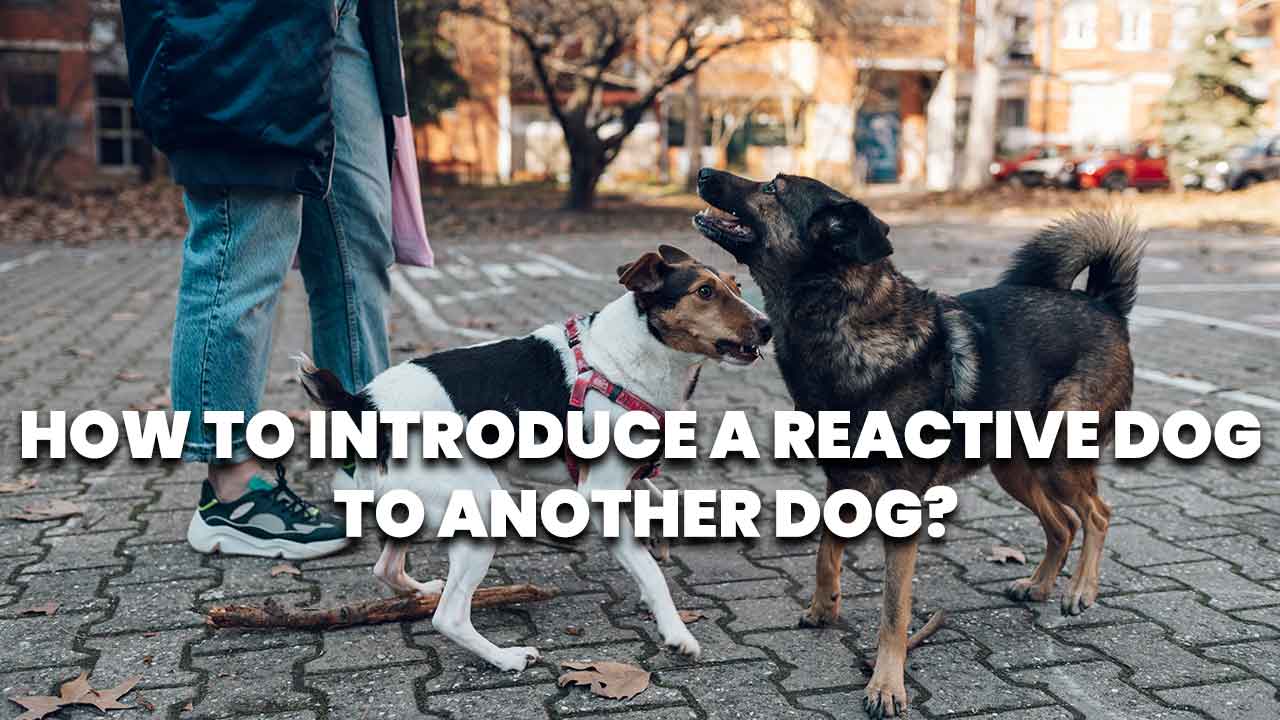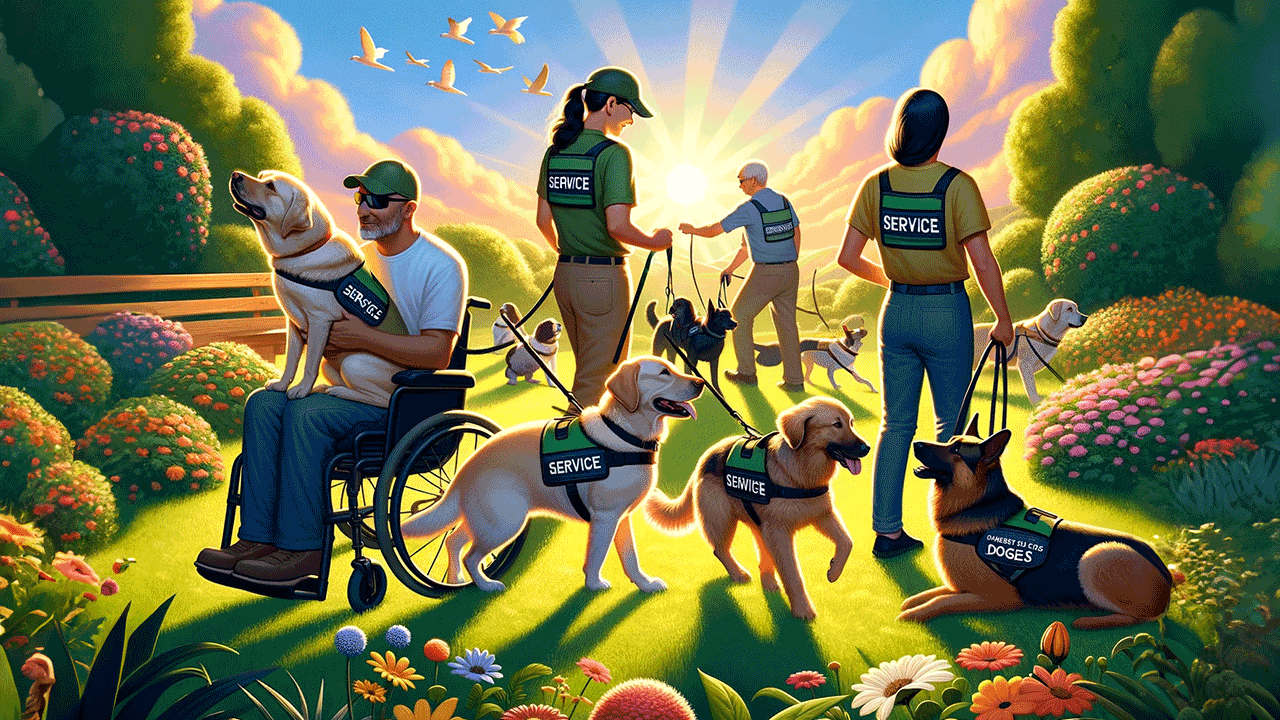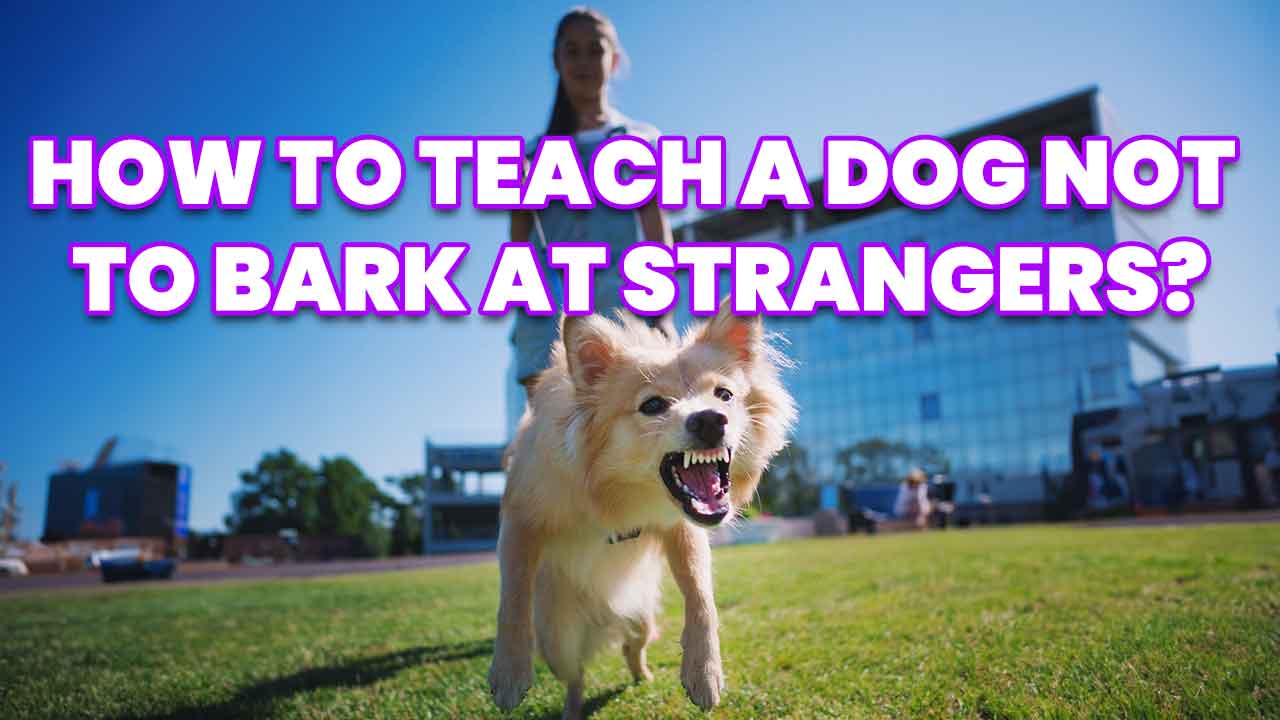How to Introduce a Reactive Dog to Another Dog
Table of Contents
Key Takeaways: How to Introduce a Reactive Dog to Another Dog
| Key Point | Description |
|---|---|
| Understanding Reactivity | Recognize the signs and triggers of reactivity in dogs. |
| Controlled Introduction | Steps for a safe and gradual introduction to another dog. |
| Importance of Neutral Territory | Why choosing the right location matters. |
| Monitoring and Adjusting | Observing dog behavior and adapting the approach. |
Introducing a Reactive Dog to Another Dog: A Compassionate Guide
Introducing a reactive dog to another dog can be a challenging yet rewarding experience. Reactive dogs, often misunderstood, exhibit behaviors like barking, lunging, or growling due to fear, insecurity, or past negative experiences. It's crucial to understand these responses as a form of communication rather than aggression. At EasyDogTrainingMethods.com, we delve into the nuances of canine behavior, offering insights into why dogs act the way they do.
Understanding Your Dog's Reactivity
Before attempting introductions, it's essential to understand what triggers your dog's reactive behavior. Is it fear, territoriality, or overexcitement? Recognizing these triggers is the first step towards a successful introduction. Our article on ‘Why Do Dogs Bark at Strangers?‘ offers valuable information on understanding your dog's barking habits, which could be a sign of reactivity.
Preparing for the Introduction
Preparation is key. Start by ensuring both dogs are on leashes to maintain control. The goal is to create a calm and structured meeting. Refer to our guide on ‘How to Stop a Dog from Pulling on a Leash‘ for tips on managing your dog during the introduction.
Choosing the Right Location
The environment plays a significant role in the success of the introduction. Opt for a neutral, open space where neither dog feels territorial. This reduces tension and allows both dogs to feel more at ease. Understanding the importance of location is further elaborated in our article on ‘My Dog is Too Friendly with Strangers‘, highlighting the influence of environment on dog behavior.
The Introduction Process
Begin with parallel walking at a distance, allowing dogs to get accustomed to each other's presence without direct interaction. Gradually decrease the distance as they become more comfortable. This controlled approach helps prevent overwhelming the dogs and reduces the likelihood of a negative reaction. For more insights on dog interactions, read ‘Teach a Dog Not to Bark at Strangers‘.
Monitoring and Adjusting
Observe the dogs' body language closely. Look for signs of stress or discomfort, such as stiff body posture, excessive panting, or avoidance behaviors. If you notice these signs, increase the distance between the dogs and try again later. Continual monitoring and adaptation are crucial for a positive outcome.
List of Signs to Monitor
- Stiff body posture
- Excessive panting
- Avoidance behaviors
- Tail tucking
- Ears pinned back
Enhancing Comfort and Confidence
Building confidence in a reactive dog is crucial before introducing them to another canine. Confidence-building exercises and positive reinforcement techniques can significantly reduce anxiety and reactivity. Explore ‘How to Train a Dog to Ignore Distractions‘ for methods to help your dog focus and remain calm in various situations.
Creating Positive Associations
Introducing a reactive dog to another dog can be greatly aided by creating positive associations. This involves pairing the presence of the other dog with something your dog loves, like treats or favorite toys. Over time, your dog learns to associate the presence of other dogs with positive experiences. For insights into reward-based training, our guide on ‘Dog Only Listens When I Have Treats‘ provides valuable tips.
Managing and Redirecting Behavior
Understanding how to manage and redirect your dog's reactive behavior is essential. If your dog starts to exhibit signs of reactivity, having a plan to redirect their attention can prevent escalation. Techniques like the ‘U-turn' or ‘Look at That' game can be effective. Learn more about behavior management in ‘Are Hands-Free Dog Leashes Safe?‘, which discusses the advantages of different types of leashes in training.
List of Confidence-Building Activities
- Obedience training sessions
- Interactive games like hide-and-seek
- Agility or obstacle courses
- Socialization classes in controlled environments
Gradual Exposure and Desensitization
Gradually exposing your reactive dog to other dogs from a safe distance can desensitize them to their presence. This should be done incrementally, ensuring your dog remains below their threshold of reactivity. For more on understanding and working with a dog's threshold, check out ‘How to Stop a Dog Barking in Crate‘, which touches on managing and reducing stress-related behaviors.
Consulting a Professional
In some cases, professional help may be required. A qualified dog trainer or behaviorist can provide personalized advice and strategies tailored to your dog's specific needs. For those considering professional training, ‘How Much is K9 Dog Training‘ and ‘Dog Protection Training Cost‘ offer insights into the expenses and benefits of expert dog training.
Advanced Socialization Techniques
Beyond basic introductions, advanced socialization techniques can be highly effective for reactive dogs. These techniques focus on gradually increasing your dog's comfort and sociability around other dogs. For instance, participating in controlled group training sessions, as discussed in ‘Smart X-50 Dog Training‘, can be a structured way to improve social skills in a reactive dog.
Understanding Dog Body Language
A key aspect of successful introductions is understanding and interpreting dog body language. This knowledge helps you to recognize signs of stress, fear, or aggression early on. Our article on ‘Why Does My Dog Bark When I Stare at Him?‘ provides insights into the nuances of canine communication, which is critical in managing reactive dogs.
Common Dog Body Language Signs
| Sign | Meaning |
|---|---|
| Tail Wagging | Can indicate excitement, but context is important. |
| Lip Licking | Often a sign of nervousness or stress. |
| Yawning | May indicate stress in a tense situation. |
| Ears Back | Can be a sign of fear or submission. |
Role of Exercise and Mental Stimulation
Regular exercise and mental stimulation play a crucial role in managing a reactive dog's behavior. A well-exercised dog is typically more relaxed and easier to manage. Incorporating activities like scent work, which is covered in ‘Scent Train a Service Dog‘, can provide both physical and mental engagement, helping to mitigate reactivity.
The Importance of Consistency and Routine
Establishing a consistent routine can provide a sense of security for reactive dogs, making them more amenable to new experiences, including meeting other dogs. Consistency in commands, walks, and feeding times helps to create a stable environment. For more on establishing routines, ‘Dog Doesn’t Want to Walk in the Morning‘ offers insights into the benefits of regular schedules for dogs.
Seeking Support from Dog Training Communities
Joining dog training communities or forums can provide support and advice from others who have experienced similar challenges. Sharing experiences and solutions can be incredibly valuable. ‘IGP Dog Training'](https://easydogtrainingmethods.com/igp-dog-training/) discusses a form of training that involves a community of dog enthusiasts, which can be a great resource.







